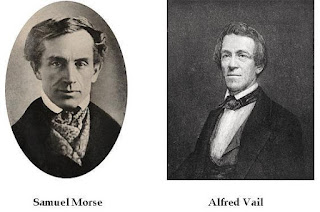According to TheHouse.gov “Samuel Morse, an inventor, created the telegraph system. Each dot and dash combination in Morse's scheme, known as "Morse code," stood for a different letter of the alphabet. The "American Recording Electro-Magnetic Telegraph" was the name of the invention's patent submission, which was made in 1837. He gave the first public demonstration of his machine to Congress in 1838 in order to request a congressional appropriation to pay for its expansion. Even though the new technology was impressively demonstrated, Morse did not get the funding he requested until 1843. On May 24th, 1844 Samuel Morse wrote the first message “What hath God Wrought? Over an experimental line from Washington D.C, to Baltimore.
Ancient civilizations such as those in China, Egypt, and Greece employed drum beats, signal fires, or smoke signals to send information between far sites until the invention of the electric telegraph in the 19th century altered how information was transmitted over vast distances.However, such methods were limited by the weather and the need for an uninterrupted line of sight between receptor points.
According to History.com The electric telegraph revolutionized how newspapers operated, how money was sent, and how battles were waged. Pieces of news could be sent between telegraph stations nearly quickly, opposed to writing letters and looking at newspapers. Although the telephone, fax machine, and Internet have since become the more practical option, the telegraph set the stage for the communications revolution that gave rise to those future inventions. The telegraph also facilitated the growth in the railroads, consolidated financial and commodity markets, and reduced information costs within and between firms.
According to science.org the telegraph had negative effects for example, From Baltimore to Washington, the first long telegraph wire ran. Depending on the length of the message and the operator's expertise, sending a message by telegraph could take a minute or several minutes. The telegraph transmission process required more time than current electronic communication techniques since each letter had to be converted to Morse Code and manually keyed.
Another negative effect was message length and access. Telegraphs could only be used for extremely brief and concise messages because the length of a message needs to be relatively small due to the conversion time of a message. Another issue was getting access to telegraphs. Certain areas had them, but others didn't. Telegraphs were rarely utilized outside of government, business, and other major institutions, in contrast to today's widespread telephones.
Final reason is poor quality communication. The telephone, created by Alexander Graham Bell in 1876 and allowing direct voice connection, quickly replaced telegraphy as the preferred method of communication. Telegraphy was relegated to specialized purposes due to the major communication quality issues associated with telegraph devices. Telegraph messages lacked the complexity and natural speech, but telephone conversations do. In contrast to the telegraph, modern communication systems enable the digital transfer of documents, video, and audio. Other technologies, like the fax machine, also enable physical documents to be reorganized on the receiving end.







No comments:
Post a Comment